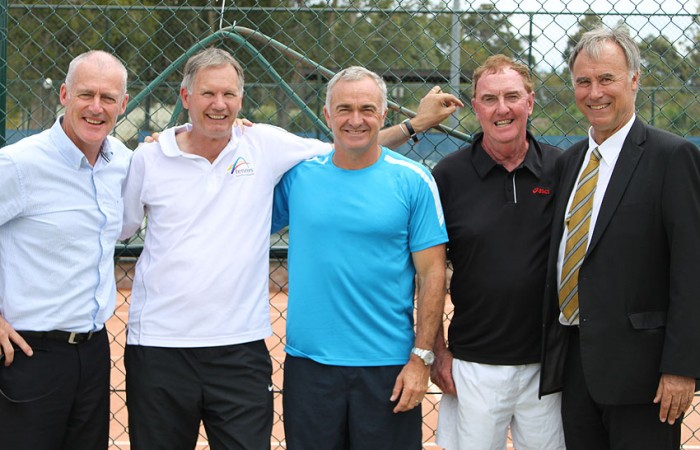Clay court research centre to boost Australian tennis
The future development of Australia’s tennis stocks has been given a boost by the launch of the TA Clay Court Research Centre at Sydney’s Macquarie University.
Sydney, Australia, 22 November 2012 | tennis.com.au

The future development of Australia’s tennis stocks has been given a boost by the launch of the Tennis Australia Clay Court Research Centre at Sydney’s Macquarie University.
The launch on Wednesday, attended by media, Tennis Australia’s president Steve Healy and former players John Fitzgerald, Wally Masur and John Alexander, saw Tennis Australia present its research into more refined and advanced clay court surfaces, play-tested by those in attendance.
This research is designed to improve upon Australia’s stock of approximately 3000 porous courts including loam, ant-bed and en-tout-cas surfaces.
The centre facilitates the research into and cultivation of a variety of clay courts to establish their suitability for the Australian climate.
This has come about following Tennis Australia’s commitment to installing more clay courts throughout the country, with natural clay recognised as the preferred surface for player development.
Chris Kachel, Tennis Australia’s clay court and development manager, said clay’s benefits in this area were wide reaching.
“For younger athletes clay is such a user-friendly surface. They get less injuries because it’s easier on body … and rallies last longer (because clay is a slower surface) which helps in their development of tactics and concentration. I guess the court does a lot of the coaching for you,” he said.
“If you’re brought up on slow surface you can play on quick surface, but it’s harder for fast court players to adapt to clay. If you look at the ATP and WTA rankings over the past 15 to 20 years, the vast majority have been raised on clay.”
Plans are afoot to establish several regional clay court facilities by 2016, and already 47 clay courts have been constructed at tennis venues around Australia since the introduction of Tennis Australia’s recent clay court initiative.
The TA Clay Court Research Centre currently has a diverse range of courts being trialled, including a Swiss clay court (Conipur Pro Clay), an American green clay court (Har-Tru) and two types of Italian red clay courts.
The latter were trialled to determine their suitability as part of the Melbourne Park redevelopment, with an eight-court clay court complex included within the new Eastern Plaza and which will be launched next week.
Kachel said that almost three years of research had gone into trialling the Italian courts at Macquarie University.
“Italian clay had the common characteristics we wanted – slow playing speed, high bounce and good traction – as well as manageable maintenance requirements,” he said.
“We started with a small test patch before laying a full court, which lots of coaches and athletes have played on and provided feedback … Of the two types of Italian clay we ended up choosing the court with coarser top dressing – wind is a real headache in Melbourne for courts with top surfacing, and especially through September and October we lose some of this, but overall it’s a excellent surface.”
The research centre will continue to refine and trial clay court surfaces, with the potential to explore new surfaces as they become available into the future.
Kachel said that the high costs involved with clay court research and development – including the importing of materials from Italy for the courts at Melbourne Park – would ultimately be worth the investment.
“The clay courts at Eastern Plaza contribute to its status as a world class facility, and all world class facilities have to have clay courts,” he said.
“The TA Clay Court Research Centre will help us achieve our goal of providing all National Academies with clay courts for their players to train on, and further down the track, hopefully a clay court tournament circuit in Australia so that training and competition will go hand and hand.”